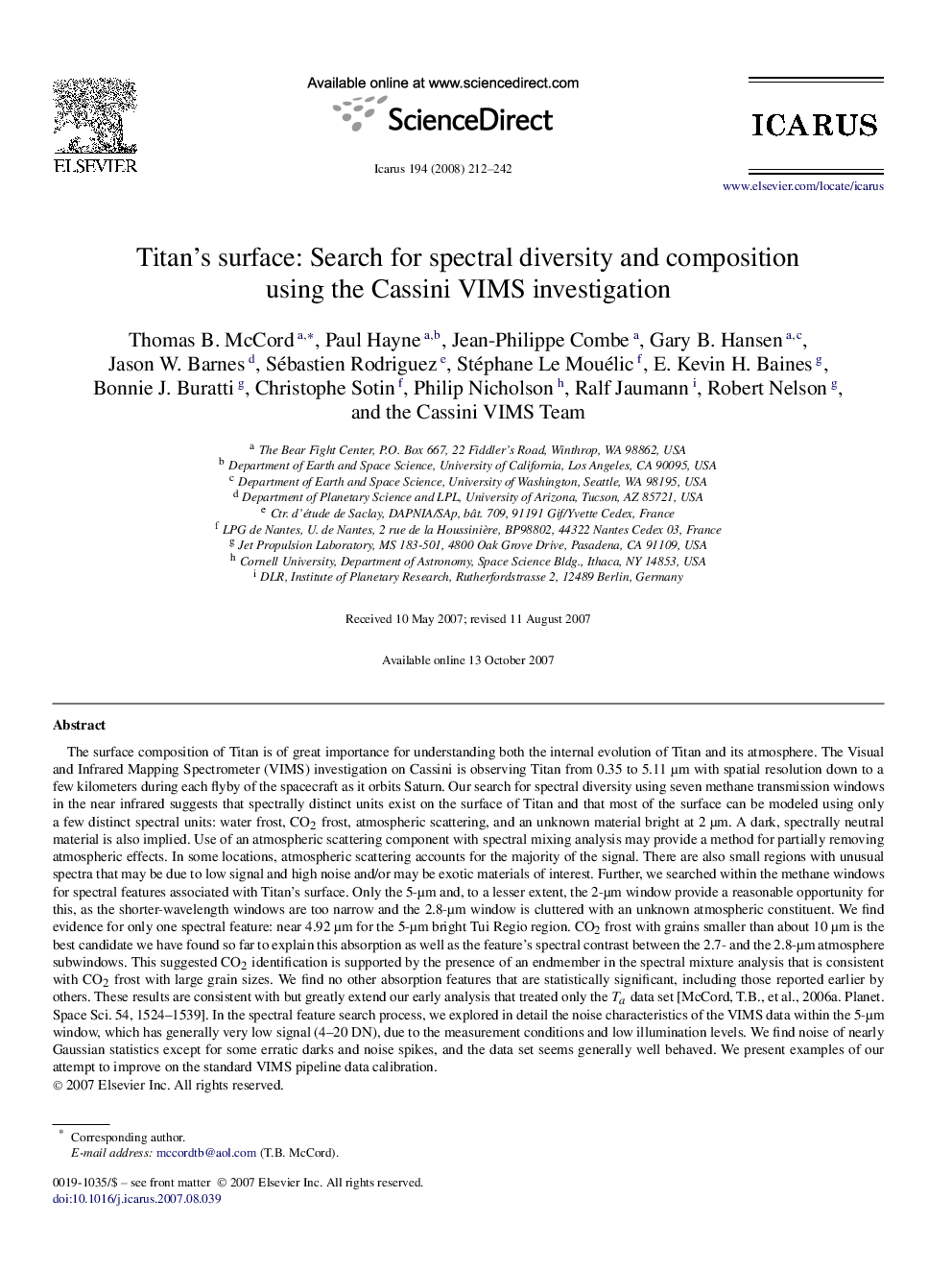| Article ID | Journal | Published Year | Pages | File Type |
|---|---|---|---|---|
| 1774935 | Icarus | 2008 | 31 Pages |
The surface composition of Titan is of great importance for understanding both the internal evolution of Titan and its atmosphere. The Visual and Infrared Mapping Spectrometer (VIMS) investigation on Cassini is observing Titan from 0.35 to 5.11 μm with spatial resolution down to a few kilometers during each flyby of the spacecraft as it orbits Saturn. Our search for spectral diversity using seven methane transmission windows in the near infrared suggests that spectrally distinct units exist on the surface of Titan and that most of the surface can be modeled using only a few distinct spectral units: water frost, CO2 frost, atmospheric scattering, and an unknown material bright at 2 μm. A dark, spectrally neutral material is also implied. Use of an atmospheric scattering component with spectral mixing analysis may provide a method for partially removing atmospheric effects. In some locations, atmospheric scattering accounts for the majority of the signal. There are also small regions with unusual spectra that may be due to low signal and high noise and/or may be exotic materials of interest. Further, we searched within the methane windows for spectral features associated with Titan's surface. Only the 5-μm and, to a lesser extent, the 2-μm window provide a reasonable opportunity for this, as the shorter-wavelength windows are too narrow and the 2.8-μm window is cluttered with an unknown atmospheric constituent. We find evidence for only one spectral feature: near 4.92 μm for the 5-μm bright Tui Regio region. CO2 frost with grains smaller than about 10 μm is the best candidate we have found so far to explain this absorption as well as the feature's spectral contrast between the 2.7- and the 2.8-μm atmosphere subwindows. This suggested CO2 identification is supported by the presence of an endmember in the spectral mixture analysis that is consistent with CO2 frost with large grain sizes. We find no other absorption features that are statistically significant, including those reported earlier by others. These results are consistent with but greatly extend our early analysis that treated only the TaTa data set [McCord, T.B., et al., 2006a. Planet. Space Sci. 54, 1524–1539]. In the spectral feature search process, we explored in detail the noise characteristics of the VIMS data within the 5-μm window, which has generally very low signal (4–20 DN), due to the measurement conditions and low illumination levels. We find noise of nearly Gaussian statistics except for some erratic darks and noise spikes, and the data set seems generally well behaved. We present examples of our attempt to improve on the standard VIMS pipeline data calibration.
